Nonlinear Buckling of Flexible Pipe Carcass Considering Residual Stress Due to Deformation
Abstract
1. Introduction
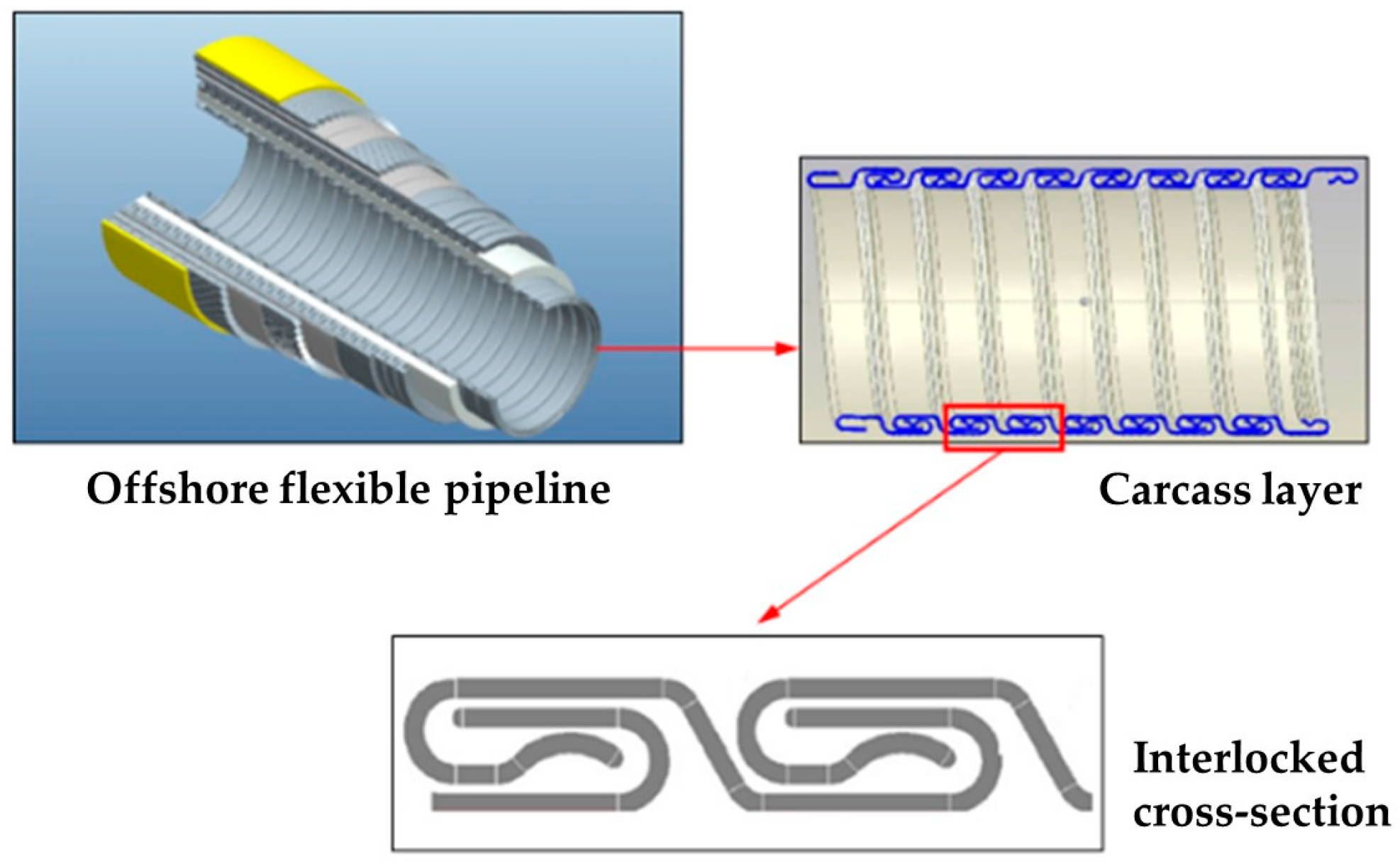
2. Deformation Principles of the Carcass Layer
- The first step is roller bending, in which the flat stainless steel strip undergoes transverse squeeze and bending with a series of rollers of different shapes, eventually forming an “S”-shaped cross-section. The steel strip moves through friction between the rollers and the strip, which is generated by the transverse squeeze of the rollers on the strip. Additionally, the rollers with different outer diameters ensure a certain tension between the rollers during the movement of the strip.
- The second step involves interlocking, when the S-shaped cross-section is transformed into an interlocking profile through four sets of radial pressure rollers. Simultaneously, the steel strip is spirally wound under a certain tension through the rotation of the centering wheel of the interlocking machine and the pressure and friction exerted by the rollers.
3. Numerical Simulation of Carcass Layer Deformation Process
3.1. Finite Element Analysis for Roller Bending Forming of Steel Strip
3.1.1. Elements and Mesh
3.1.2. Constraints and Loading
3.1.3. Analysis Results
3.2. Finite Element Analysis for Interlocking Forming Process
3.2.1. Model Description
3.2.2. Analysis Results
4. Nonlinear Buckling Analysis of the Carcass Layer
4.1. Three-Dimensional Finite Element Model of the Carcass Layer
4.2. Nonlinear Buckling of the Carcass Layer Considering Residual Stresses Due to Deformation
5. Conclusions
Author Contributions
Funding
Institutional Review Board Statement
Informed Consent Statement
Data Availability Statement
Conflicts of Interest
References
- Report of Committee V.8: Risers and pipelines. In Proceedings of the International Ship and Offshore Structures Congress (ISSC), Lisbon, Portugal, 7–10 September 2015.
- Yue, Q.J.; Lu, Q.Z.; Yan, J. Tension behavior prediction of flexible pipelines in shallow water. Ocean Eng. 2013, 58, 201–207. [Google Scholar] [CrossRef]
- Tang, M.G.; Yang, C.; Yan, J. Validity and limitation of analytical models for the bending stress of a helical wire in unbonded flexible pipes. Appl. Ocean Res. 2015, 50, 58–68. [Google Scholar] [CrossRef]
- Yan, J.; Ying, X.P.; Bu, Y.F. Summary of development of flexible riser structural technology in deep water. Ocean Eng. Equip. Technol. 2019, 6, 745–749. [Google Scholar]
- Zhang, Y.; Chen, B.; Qiu, L. Analytical tools optimize unbonded flexible pipes for deepwater environments. J. Pet. Technol. 2004, 56, 48–58. [Google Scholar]
- Tang, M.G.; Lu, Q.Z.; Yan, J. Buckling Collapse Study for the Carcass Layer of Flexible Pipes Using a Strain Energy Equivalence Method. Ocean Eng. 2016, 111, 209–217. [Google Scholar] [CrossRef]
- Wang, W.; Chen, G. Analytical and numerical modeling for flexible pipes. China Ocean Eng. 2011, 25, 737–746. [Google Scholar] [CrossRef]
- Gay Neto, A.; de Arruda Martins, C. A comparative wet collapse buckling study for the carcass layer of flexible pipes. J. Offshore Mech. Arct. Eng. 2012, 134, 031701–031709. [Google Scholar] [CrossRef]
- Pang, G.L.; Chen, C.H.; Shen, Y.J. Equivalent calculation of critical collapse pressure of flexible pipes and parametric analysis of collapse influence factors. J. Pipeline Syst. Eng. Pract. 2021, 12, 04020062. [Google Scholar] [CrossRef]
- Timoshenko, S.P.; Gere, J.M. Theory of Elastic Stability, 2nd ed.; Courier Corporation: North Chelmsford, MA, USA, 1961. [Google Scholar]
- Nogueira, V.P.P.; Netto, T.A. A Simple Alternative Method to Estimate the Collapse Pressure of Flexible Pipes. In Proceedings of the ASME 29th International Conference on Ocean, Offshore and Arctic Engineering, Shanghai, China, 6–11 June 2010. [Google Scholar]
- Chen, Y.F.; Liu, H.; Cao, J. Collapse failure of carcass for unbonded flexible pipe considering axial loading and external pressure. Ocean Eng. 2022, 40, 125–133. [Google Scholar]
- Gay Neto, A.; de Arruda Martins, C.; Malta, E.R. Simplified finite element models to study the wet collapse of straight and curved flexible pipes. J. Offshore Mech. Arct. Eng. 2017, 139, 061701. [Google Scholar] [CrossRef]
- Liu, M.E.; Yang, L.; Fan, J.K. Analysis of multi-pass cold bending process for carcass layer of deepwater flexible pipeline. Die Mould Technol. 2021, 40, 40–47. [Google Scholar]
- Meniconi, S.; Brunone, B.; Tirello, L. Transient tests for checking the Trieste subsea pipeline: Towards the field tests. J. Mar. Sci. Eng. 2024, 12, 374. [Google Scholar] [CrossRef]
- Meniconi, S.; Brunone, B.; Tirello, L. Transient tests for checking the Trieste subsea pipeline: Diving into fault detection. J. Mar. Sci. Eng. 2024, 12, 391. [Google Scholar] [CrossRef]
- Tang, M.G.; Wang, Y.; Yan, J. Finite element analysis for collapse of flexible pipes carcass. J. Harbin Eng. Univ. 2013, 34, 1135–1140. [Google Scholar]
- Yu, T.X. Engineering Plasticity Mechanics, 2nd ed.; Higher Education Press: Beijing, China, 2010. [Google Scholar]
- Zhu, J.F.; Wang, H.; Xu, S.L. Nonlinear Finite Elements and Their Application in the Design of Aircraft Structures, 2nd ed.; Shanghai Jiao Tong University Press: Shanghai, China, 2012. [Google Scholar]
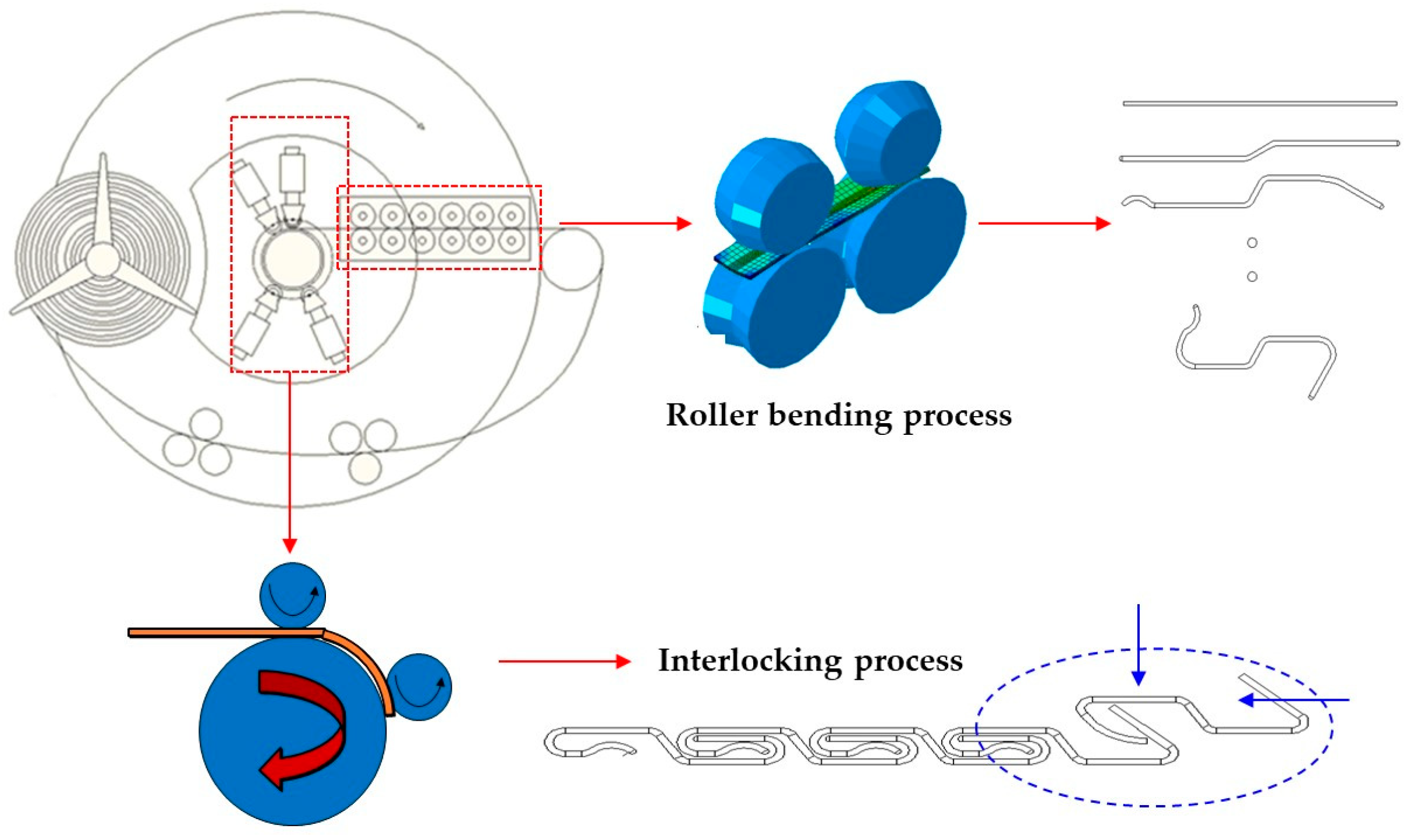




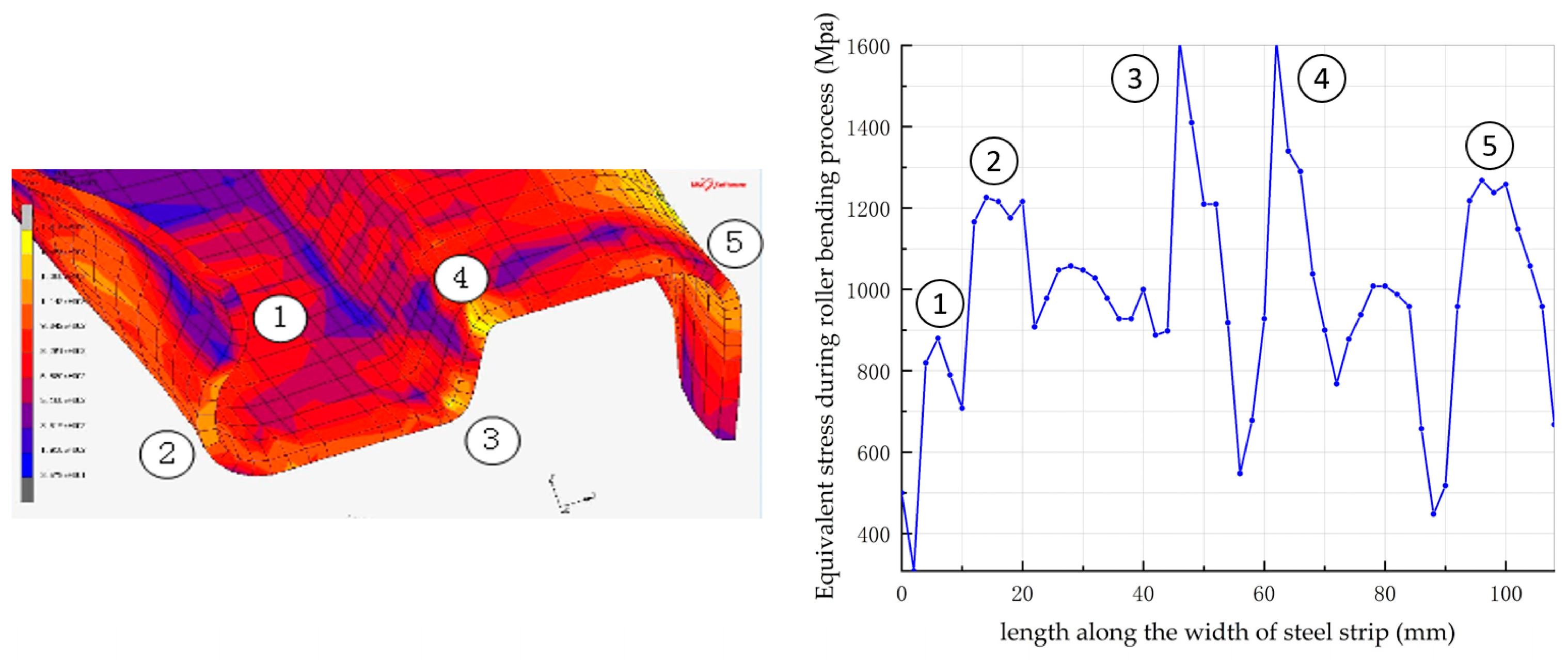

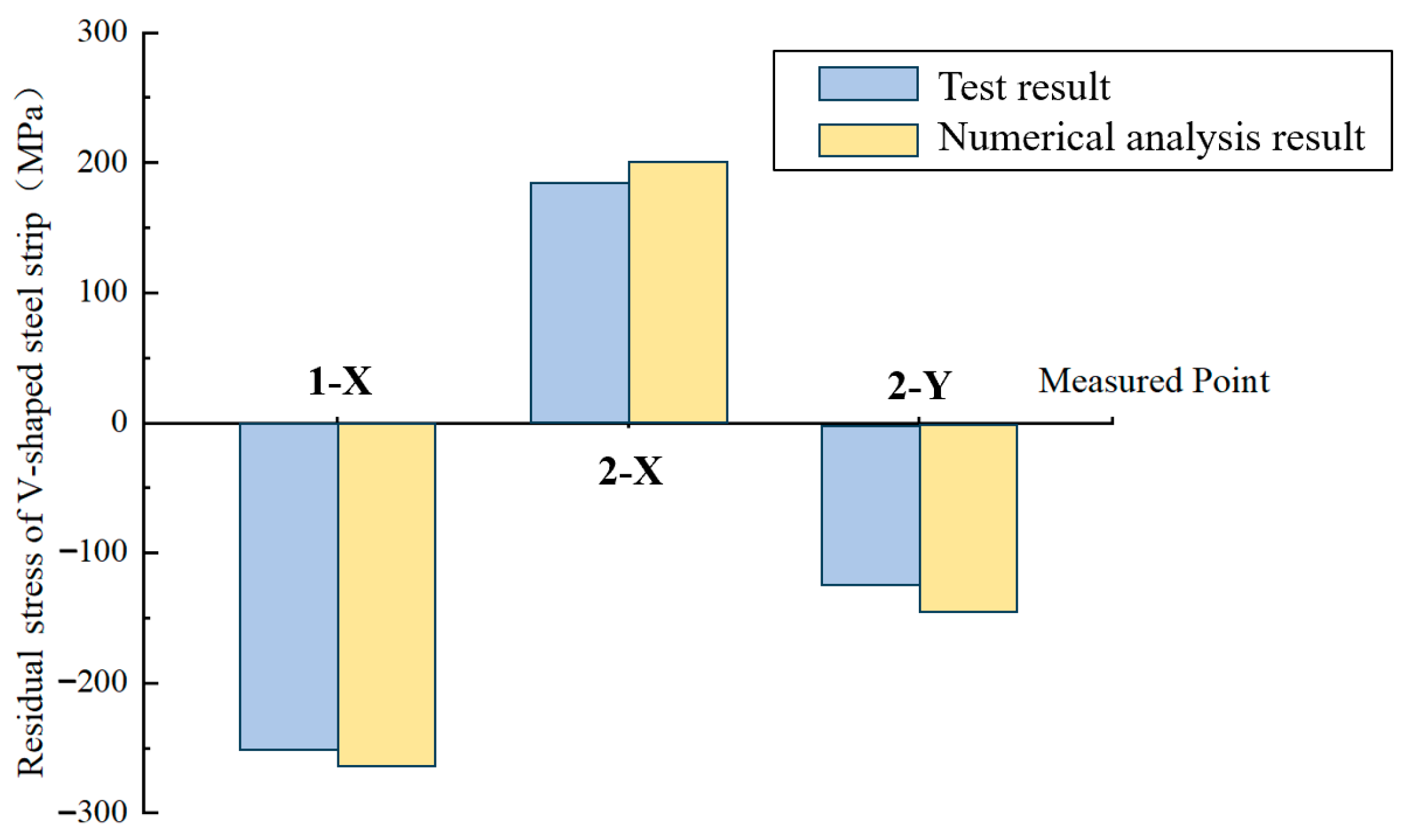



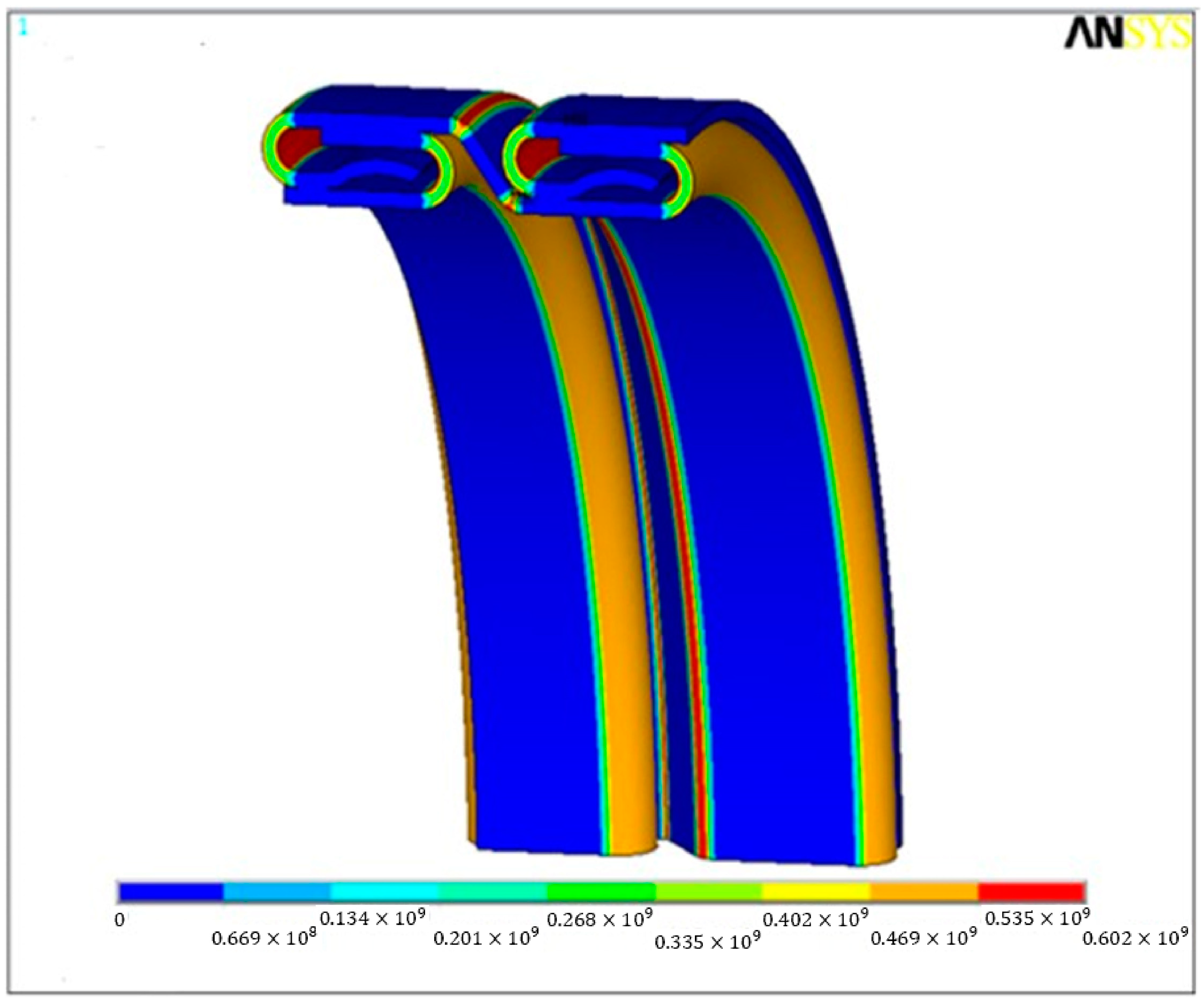
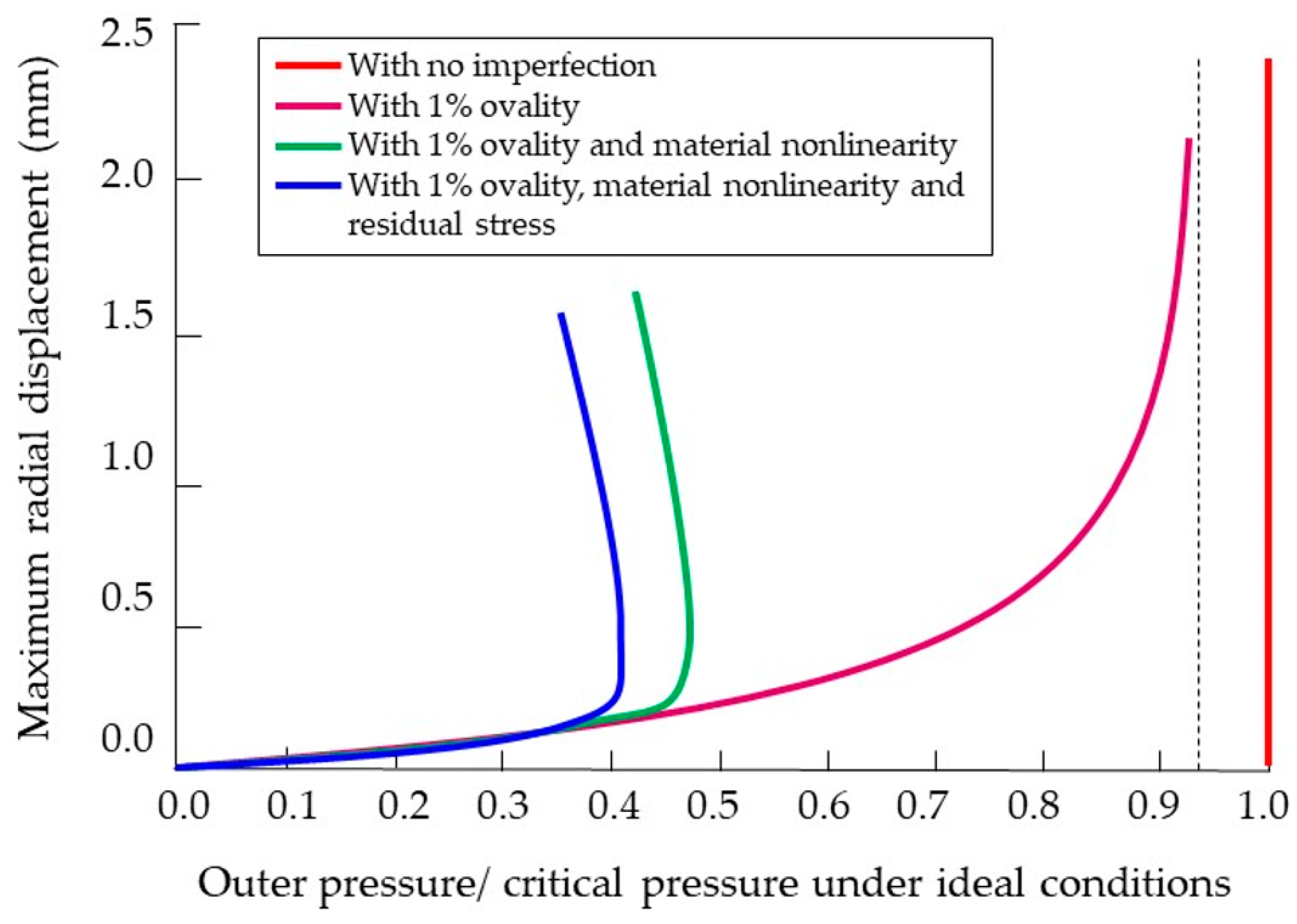
| Imperfection Type | Critical Pressure (MPa) | Deviation |
|---|---|---|
| No imperfection (first-order eigenvalue) | 47.6 | -- |
| 1% ovality | 42.3 | −7% |
| 1% ovality + material nonlinearity | 22.1 | −53% |
| 1% ovality + material nonlinearity + residual stress due to deformation | 18.5 | −61% |
Disclaimer/Publisher’s Note: The statements, opinions and data contained in all publications are solely those of the individual author(s) and contributor(s) and not of MDPI and/or the editor(s). MDPI and/or the editor(s) disclaim responsibility for any injury to people or property resulting from any ideas, methods, instructions or products referred to in the content. |
© 2024 by the authors. Licensee MDPI, Basel, Switzerland. This article is an open access article distributed under the terms and conditions of the Creative Commons Attribution (CC BY) license (https://creativecommons.org/licenses/by/4.0/).
Share and Cite
Tang, M.; Guo, Z.; Zheng, W.; Wu, F. Nonlinear Buckling of Flexible Pipe Carcass Considering Residual Stress Due to Deformation. J. Mar. Sci. Eng. 2024, 12, 1402. https://doi.org/10.3390/jmse12081402
Tang M, Guo Z, Zheng W, Wu F. Nonlinear Buckling of Flexible Pipe Carcass Considering Residual Stress Due to Deformation. Journal of Marine Science and Engineering. 2024; 12(8):1402. https://doi.org/10.3390/jmse12081402
Chicago/Turabian StyleTang, Minggang, Zepeng Guo, Wenhui Zheng, and Fanlei Wu. 2024. "Nonlinear Buckling of Flexible Pipe Carcass Considering Residual Stress Due to Deformation" Journal of Marine Science and Engineering 12, no. 8: 1402. https://doi.org/10.3390/jmse12081402
APA StyleTang, M., Guo, Z., Zheng, W., & Wu, F. (2024). Nonlinear Buckling of Flexible Pipe Carcass Considering Residual Stress Due to Deformation. Journal of Marine Science and Engineering, 12(8), 1402. https://doi.org/10.3390/jmse12081402






